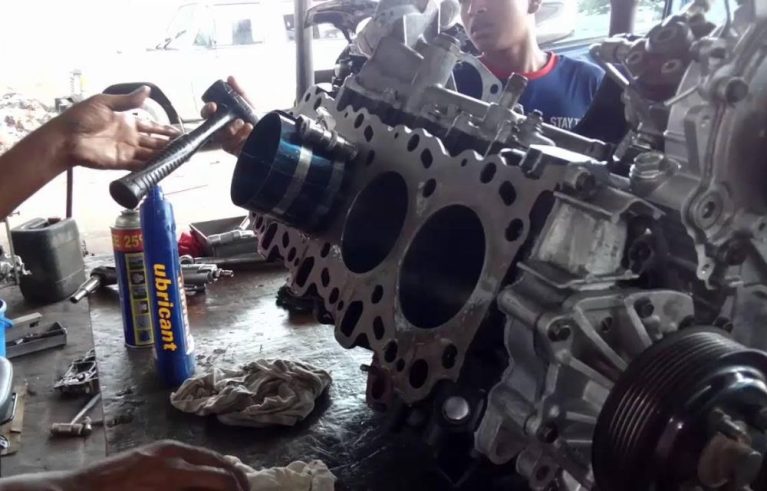Rebuilding an engine can be one of the most rewarding do-it-yourself projects for a car enthusiast. It allows you to give new life to a worn-out motor and save a lot of money in contrast to purchasing a new engine or vehicle. Yet, jumping into an engine rebuild without proper knowledge or preparation can result in expensive errors. Knowing what not to do is as vital as knowing what to do.
Whether attempting a complete engine overhaul and rebuild or just replacing some key components, avoiding these seven common mistakes can save you time, money, and sanity.

1. Failing to Diagnose the Problem Properly
One of the most common mistakes is beginning a rebuild without determining what originally went wrong. Folks tend to think an engine must be rebuilt because it’s old or noisy. But until you’ve determined the cause of the problem — overheating, low oil pressure, or bad compression — you may rebuild the engine only to see the same thing happen again.
Tip: Always perform compression and leak-down tests and check internal parts before investing in a complete rebuild.
2. Not Keeping Track of Parts and Fasteners
You’ll deal with hundreds of bolts, nuts, clips, and components during an engine disassembly. Failing to properly label, organize, or store these parts can lead to confusion during reassembly. Losing a single washer or mixing up bearing caps can throw your entire rebuild off course.
Tip: Use labeled containers and zip-lock bags, and take photos of each step. Keep parts grouped based on their assembly stage for easier reinstallation.
3. Avoiding the Machine Shop
Most DIYers think they can clean and reuse worn-out parts without going to a machine shop. This is a grave error. Even if parts such as the crankshaft or cylinder walls “look okay,” they can be out of spec or unevenly worn. Reusing worn parts without resurfacing or measurement can cause premature engine failure.
Tip: For a successful engine overhaul and rebuild, have your cylinder heads, crankshaft, and block inspected and machined by professionals. It’s not cleanliness alone — it’s precision.
4. Using the Incorrect Torque Specs or Sequence
Engines are complex systems with tightly established tolerances. Not applying a torque wrench or over-tightening in improper sequence can warp heads, destroy gaskets, and cause leaks. Many people “eyeball” torque or go on experience, not verified data.
Tip: Never rely on a Chilton manual or a cheap guide for the precise torque values and bolt patterns. Spend money on a good quality torque wrench — it’s not a luxury; it’s a necessity.
5. Failure to Replace Critical Components
Some rebuilders attempt to cut costs by omitting the replacement of components such as piston rings, gaskets, timing chains, oil pumps, or valve guides. Even if these parts are still functional, their reuse can lead to a higher probability of failure shortly after the rebuild.
Tip: Never reuse timing belts, seals, or gaskets. Wearing parts should be replaced for long-term reliability when overhauling and rebuilding an engine.
6. Incorrect Cleaning and Assembly Techniques
Engines must be surgically cleaned upon reassembly. Dirt, debris, or residue from the old gasket material will contaminate the engine oil and cause damage to internal parts. Likewise, assembling with too little or improper lubrication, or even incorrect assembly lube, will cause a dry start and increased wear.
Tip: Clean thoroughly all components with solvent, compressed air, and lint-free rags. Apply the proper engine assembly lube and adhere to all guidelines for priming the oiling system before the first startup.
7. Hurrying the Break-In Process
After hours (or days) of work on a rebuild, it’s easy to get impatient, crank up the engine, and drive away into the sunset. However, omitting or bypassing the break-in process may negate all your effort. New piston rings have time to seat, and new components must heat cycle before there is full performance.
Tip: Adhere to a rigorous break-in regimen, such as alternating RPMs, not running high speeds early on, and oil change early to remove contaminants. Refer to your parts supplier or engine builder for a suggested break-in process.

Conclusion
Rebuilding an engine, yourself is a challenging and satisfying endeavor — but only if done right. The thrill of listening to your newly rebuilt engine roar to life is unbeatable, but it’s accompanied by a duty to honor the intricacy of the process. Every aspect counts in an engine overhauling and rebuild, from proper diagnosis to meticulous reassembly.
Steering clear of these seven most common blunders can be the difference between a strong, dependable motor and a failed venture. So go slow, utilize the proper equipment, and don’t hesitate to call for professional assistance when necessary. Your engine and bank account will be glad you did in the end.



